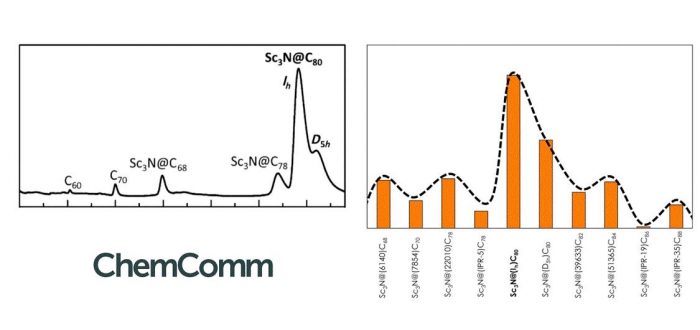Endohedral metallofullerenes (EMFs) have attracted much attention since their discovery because of their extraordinary properties and potential applications. The synthesis of EMFs from a carbon soot sample of an arc discharge or laser vaporization leads to many different EMFs that are obtained in different relative abundances. Few of them, like the Sc3N@Ih-C80 trimetallic nitride template (TNT) EMF, can be produced in macroscopic amounts. In the present work, the authors show that these abundances can be predicted from aromaticity calculations. In particular, they propose to use the normalized Additive Local Aromaticity (ALAN) index calculated by averaging the electronic index INB of all rings of the fullerene cage. The Figure above show on the left the quantitative HLPC chromatograms of the arc reactor carbon sample of a typical scandium based TNT EMFs synthesis and on the right the relative ALAN scaled values sorted by increasing cage size. The results show that the most abundant Sc3N-based and Y3N-based EMFs in fullerene soot are the most aromatic. This study, published today in Chem. Commun., reinforces the idea that aromaticity plays a key role in determining the stability of EMFs:
M. Garcia-Borràs, S. Osuna, J.M. Luis, and M. Solà
“Rationalizing the relative abundances of trimetallic nitride template-based endohedral metallofullerenes from aromaticity measures”
Chem. Commun. 2017, ASAP-
[abstract]
DOI: 10.1039/C7CC01750B

